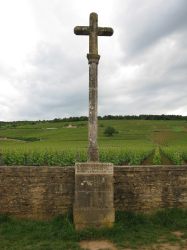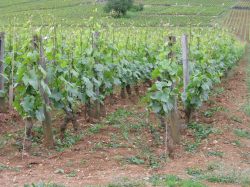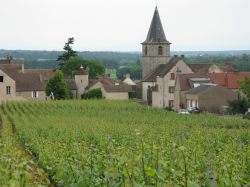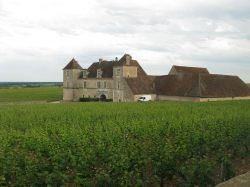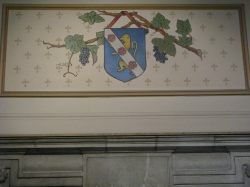

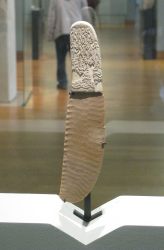

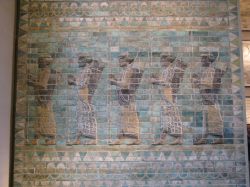

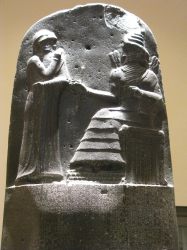
Apartments of Napoleon III


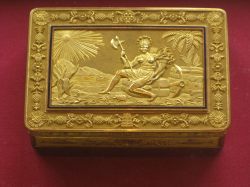
Karen and I went to Paris in May 2009 to celebrate our 30th anniversary. We stayed in Paris for most of two weeks with day trips to Chartres and Reims, and spend our last two days in Burgundy. Our hotel was in the Rue Cler area of Paris, between the Eiffel Tower and Hotel des Invaldes. Rue Cler is a great place to stay with a pedestrian street of small markets (meat, fish, pastry, wine, cheese, delicacies, pre-cooked entrees and vegetables etc), plus many small restaurants. The Hotel Beaugency is very clean and run by friendly people, but the rooms are rather small. The French have caught on to the idea of having no-smoking areas in restaurants, but outside you check the wind and take your chances, nevertheless, there are lots of nice places to sit outside and enjoy the view while finishing your wine.
The Louvre needs no introduction as one of the world's great museums. The last time I visited in 1995, the Egyptian gallery was closed for renovation, but now it's open. Rather than photograph lots of exhibits, I just bought a catalog but here are a few highlights. Everybody in Beaverton will recognize the original Nike standing on the bow of her ship. The archers are from the palace of Darius I. The black stele displays the code of Hammurabi.
The small statue is Imhotep, an Egyptian civil engineer and physician from the 27th century BC. Imhotep is the earliest person whose name we know due to a technical achievement, he built the step pyramid for third dynasty Pharaoh Zoser in Saqqara, Egypt. The step pyramid was the first Egyptian multi-story building of its size in stone and inspired the larger, pointed pyramids of fourth and later dynasties built in Giza and elsewhere. During his lifetime, Imhotep was chancellor to the Pharaoh and was depicted on the pharaoh's statues. After his death, he was promoted to deity, and worshipped as a god thru the Ptolemaic period, pretty good for a civil engineer.







Apartments of Napoleon III



The small gold box is labeled "An allegory of America" It represents French ideas of America in the early 1800's, a wild place with noble savages and just the beginnings of European civilization.
Place de la Concorde is one of the places where the guillotine was located during the French revolution. After the revolution, it was named in the hope that everyone could get along.
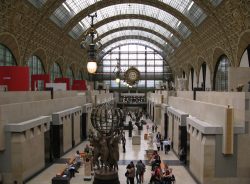 Interior of the Musee d'Orsay. |
 Place de la Concorde. |
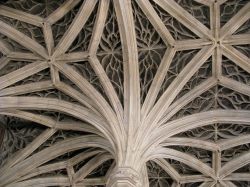 Ceiling of the chapel in the Cluny Museum (Museum of the Middle Ages). |
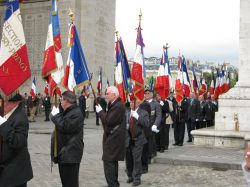 Ceremony at the Arc de Triomphe. |
 Moulin Rouge in Montmartre |
The Moulin Rouge was a hot place in the 1920's where the wild women were.

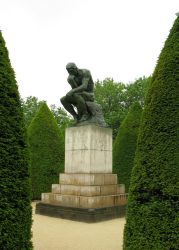
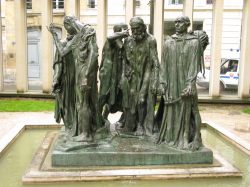
The group of 6 statues is the "Burghers of Calais". During the Hundred Years War between the English and the French in the 1300's, Edward III had the coastal city of Calais under siege for nearly a year. When the French army failed to lift the siege and the city asked for surrender terms, Edward demanded that 6 of the leaders of the city surrender to him with nooses around their necks, presumably for execution, and he would spare the rest of the citizens. 6 wealthy citizens and civic leaders, volunteered, but at the plea of his queen, Edward spared their lives. The statue depicts the 6 burghers as they leave the city to present themselves to Edward.
The palace and estate at Versailles was built on the site of a royal country estate by Louis XIV, the absolute monarch of France at the time when France was the leading power in Europe. French culture reached as far east as Russia, a later King of Prussia gave his country get-away palace a French name and French was the international language of diplomacy and commerce. The place is full of depictions of Louis as a conquering hero, a Roman emperor, a Greek god and so forth.
The establishment of the German Empire after the Franco-Prussian war of 1870 was proclaimed in the Hall of Mirrors. The Treaty of Versailles signed here ended World War I. An earlier treaty of Versailles ended hostilities between France and Great Britain in the American war of independence.
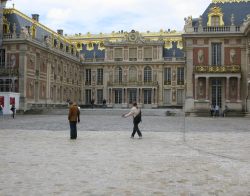
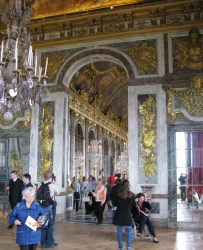
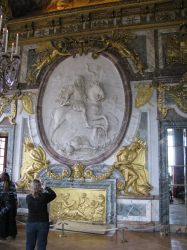
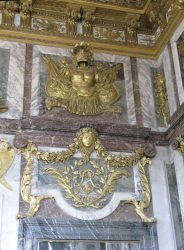
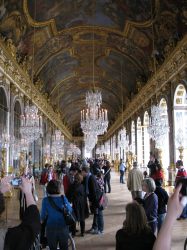
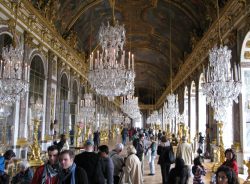
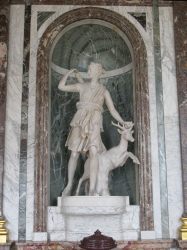
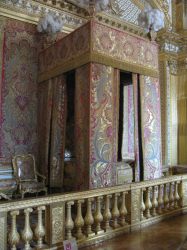
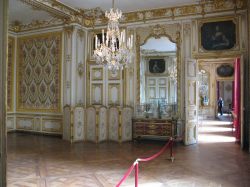

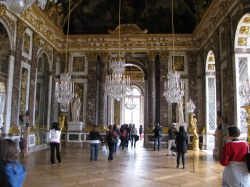
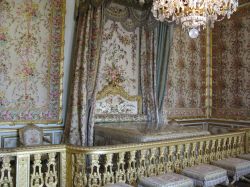

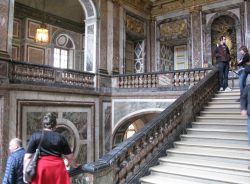


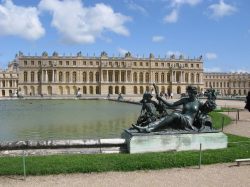

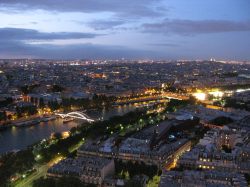
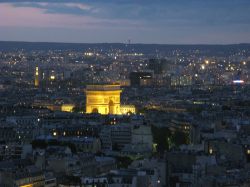
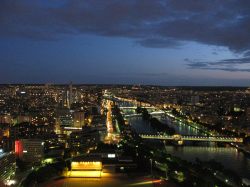


When the Eiffel Tower was built in 1889, it was the tallest structure in the world, taking the title away from the Great Pyramid of Cheops (Khufu) which had held it since 2560 BC.
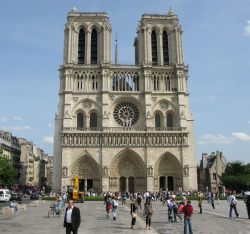



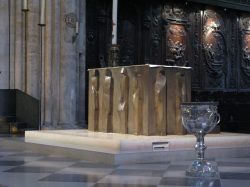

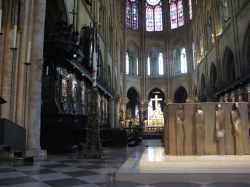

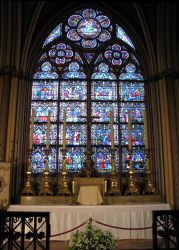
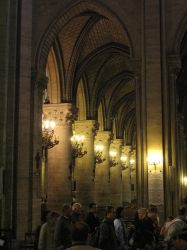

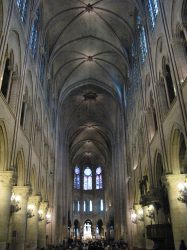
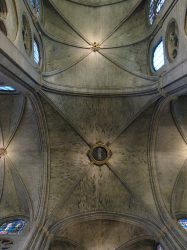
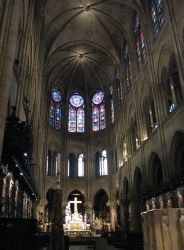
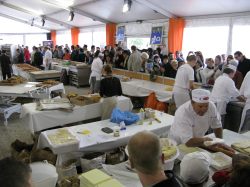
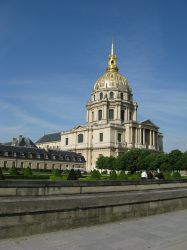
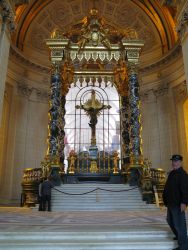
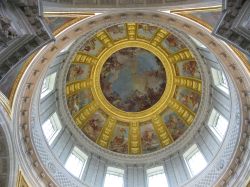
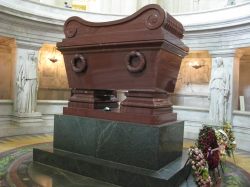

Napoleon I dressed as the sun god Apollo. The inscription reads "Everywhere my rule has passed, it has left durable traces of its benefit."
Army Museum. Exhibits from the time of the three musketeers (see the stylish hat below) to post-world War II. The daggers are from Indonesia.
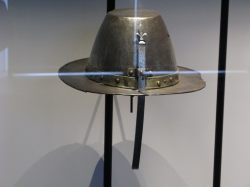
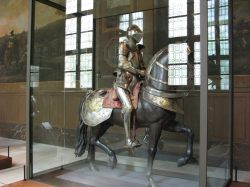
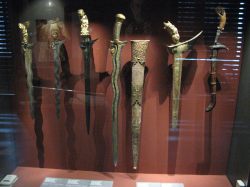
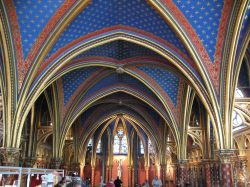

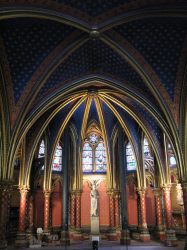
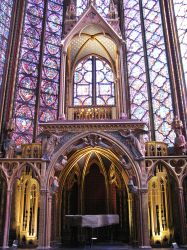

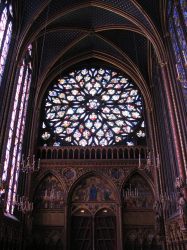
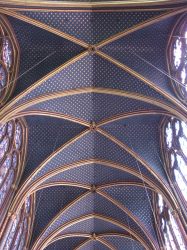
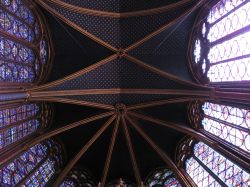
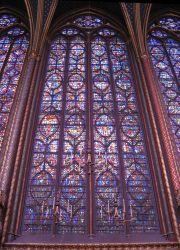
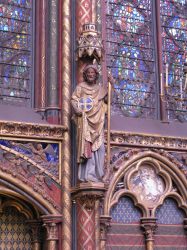
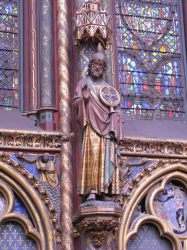
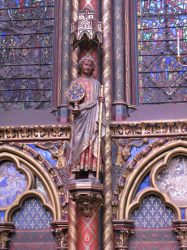
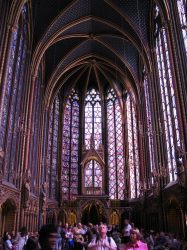
The cathedral at Chartres was built in the early 1200's to replace an earlier cathedral. It may be France's best preserved gothic cathedral having escaped damage in war and the French revolution and has not been extensively renovated. Much of the stained glass is original.
The cathedral houses a shawl claimed to have been worn by the Virgin Mary. Modern investigation has dated the cloth to the first century AD so at least it's the right age.
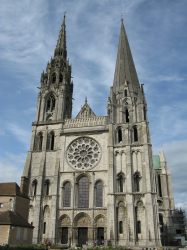
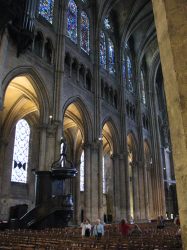
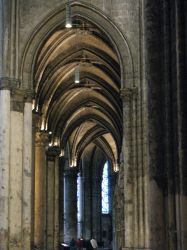
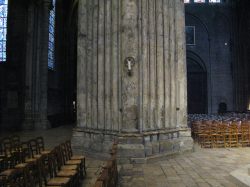
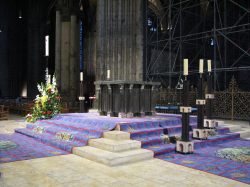
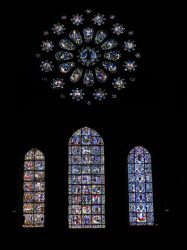


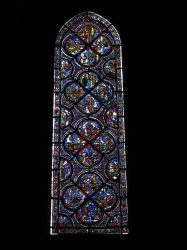
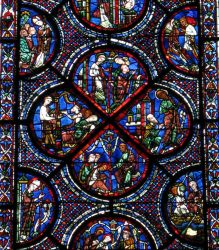
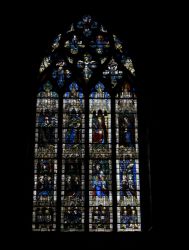

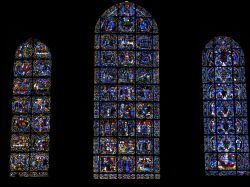
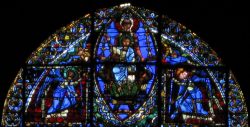
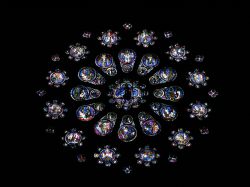
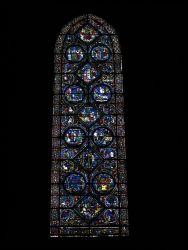

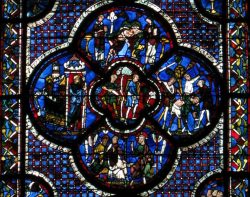
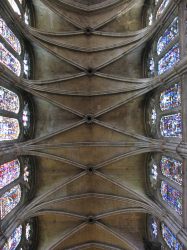


Most of the French kings from Louis VII in 1137 until Charles X in 1824 were crowned in the cathedral at Reims. The reason is mentioned on the plaque in the floor "Here, Saint Remi baptized Clovis, King of the Franks". Clovis united the Frankish tribes, conquered a large part of modern France (the Gaul of the Romans) and founded the Merovingian dynasty. Clovis' conversion to Christianity and baptism in 496 AD strengthened the cultural exchange between his Germanic people and Catholic southern Europe. A lot of this was undone when Clovis died and was succeeded by his four sons ruling four parts of France.
One of the legends of Clovis' coronation is that the oil for anointing was delivered from heaven by a dove. This legendary vial of oil was preserved by the monks in the monastery of Ste Remi and a needle dipped in the heavenly oil was mixed with the earthly oil at all later coronations. This, as well as coronation in Reims, bolstered the legitimacy of the later French royal dynasties. The vial was broken during one of the anti-monarchial revolutions in France.
The cathedral was heavily damaged and set on fire by German shelling in World War I and had to be largely rebuilt. Notable stained glass windows include a set of three by Marc Chagall and a set showing men making wine, assisted by the angels.
Eisenhower's Supreme Headquarters Allied Powers Europe (SHAEF) was located in a school in Reims during the last stage of WW2 in Europe, the German surrender ending the war in Western Europe took place there in 1945.
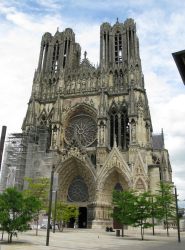

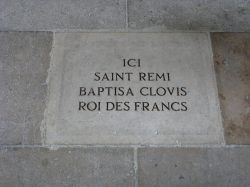
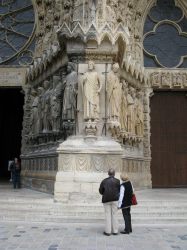
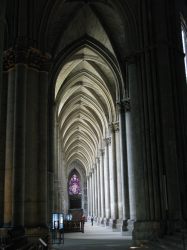

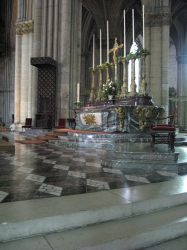
For the non-Catholics, "Notre Dame" is French for "our lady", a reference to Mary, the mother of Jesus of Nazareth. Because of her perceived ability and willingness to intercede in heaven for mercy for sinners on earth, she was, and is, a popular namesake for churches. A cathedral is a church which contains a cathedra, a bishop's official chair. The cathedral is the church of the bishop of a diocese, the headquarters church. A cathedra with a canopy over it can be seen to the left of the main altar in the photo above.
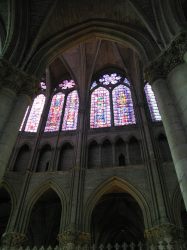
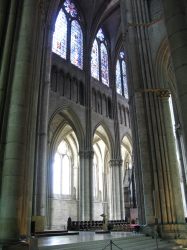
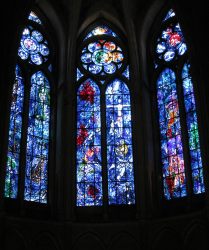
Windows by Marc Chagall above, right and depicting the heavenly art of wine making below.
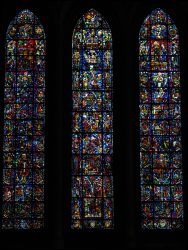

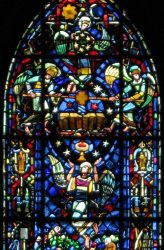
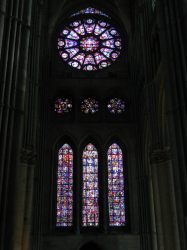
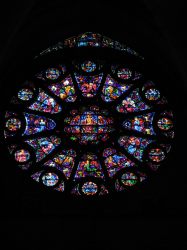
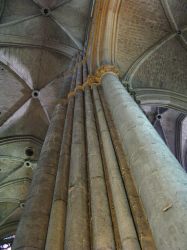
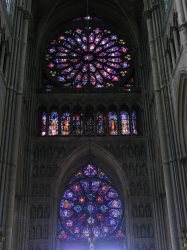
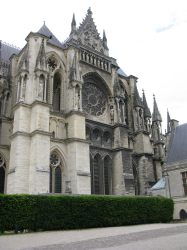
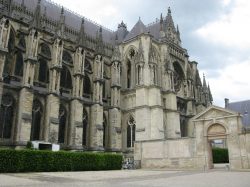

The ride to Reims and part of the ride to Burgundy can be done on the Train a Grande Vitesse (TGV), the French equivalent of the bullet train.
The TGV runs from Paris to Dijon, where one transfers to a local line heading for Beaune. As the traveller passes through the tiny villages, he sees on the stations and roadsides names that would be recognized anywhere in the world, the names on the bottles from the vignoble of Bourgogne. Later, when I told our tour guide that we were from Oregon, he allowed that our winemakers make a pretty good pinot noir, but they take their vinestocks and inspiration from the vineyards on the hills visible to the West of the rail line.
Hotel Dieu de Beaune
In the middle 1400's, the chancellor of the Duke of Burgundy, Nicholas Rolin, founded the Hotel Dieu as a hospital for poor people in order to gain merit for his soul at the end of his life. The hospital operated into the 20th century, but is now a museum to preserve the medieval architecture, especially the intricate tile roofs.
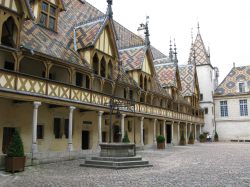
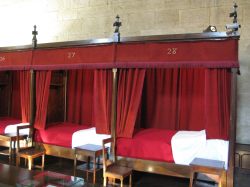
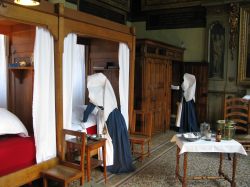
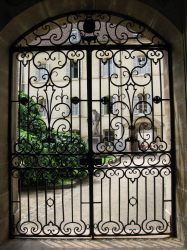
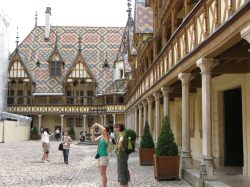
Town of Beaune, including a wine cellar built in the 1300's

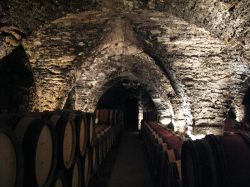

A couple of millennia ago, the Romans invaded Gaul and explained what wine was, and the Burgundians have been producing it ever since. We dropped into one wine distributor, tasted some of their wine and were given a tour of their 12th century wine cellar.
Romanee-Conti Vineyard, village of Vosne-Romanee
A tiny vineyard, an especially favored place. The wine from this vineyard goes for > 1000 euros a bottle.
